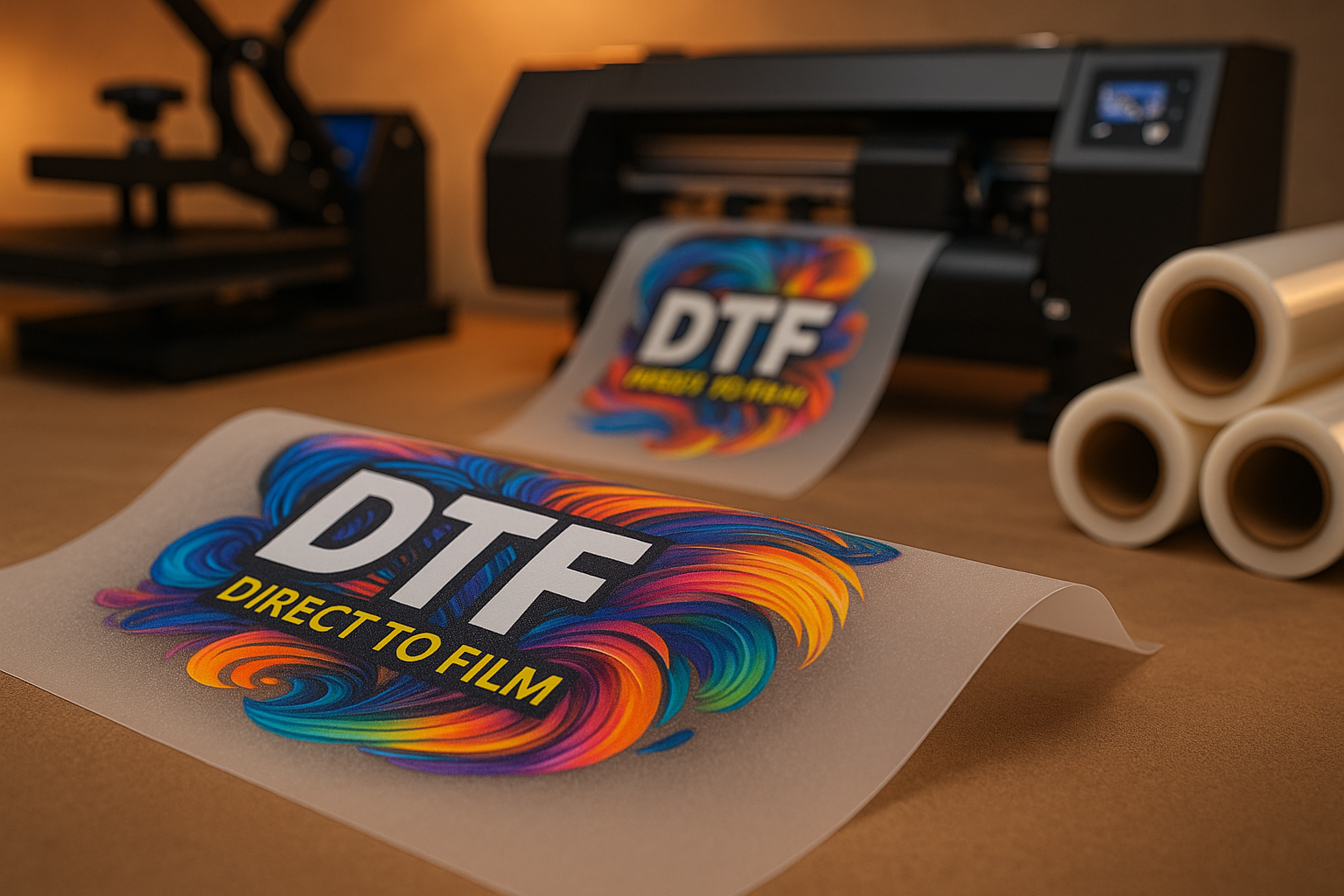Direct-to-Film (DTF) printing has quickly emerged as a game-changer in the garment decoration industry. Offering vibrant prints, flexibility across fabric types, and cost-effective customization, DTF printing has captivated hobbyists and commercial printers alike. At the core of this technology are two essential components: water-based inks and powder adhesive. Understanding how these elements work together can help print professionals and beginners alike optimize their process, reduce waste, and deliver high-quality results.
This blog post by DTFSuperPrint.com will take an in-depth look at the science behind DTF printing, focusing specifically on water-based inks and powder adhesive. We’ll explore their chemical makeup, the transfer process, and best practices for ensuring durability and vibrancy in your final prints.
What is DTF Printing?
DTF printing is a heat transfer method that involves printing designs onto a special PET (polyethylene terephthalate) film using water-based inks, applying a powdered adhesive, curing the adhesive, and finally transferring the design onto fabric using a heat press.
Key Components of DTF Printing:
- PET Film: Serves as the base for printing.
- Water-Based Pigment Inks: Create the design.
- Powder Adhesive: Bonds the ink to the fabric.
- Heat Press: Transfers the design from film to fabric.
Unlike traditional screen printing or DTG (Direct to Garment), DTF does not require pre-treatment of garments and can be used on a wide variety of fabric types including cotton, polyester, blends, and even leather.
Water-Based Inks Explained
What Are Water-Based Pigment Inks?
Water-based inks used in DTF printing consist of pigment particles suspended in water and other additives. These inks offer excellent color vibrancy, eco-friendliness, and soft hand-feel once transferred.
Key Components:
- Pigments: The colored material that provides vibrancy.
- Binders: Help pigments adhere to the substrate.
- Additives: Improve performance (flow, drying time, shelf life).
- Water: Solvent used to carry the pigment.
Why Water-Based Inks?
- Environmentally Friendly: Less VOC emissions compared to solvent-based inks.
- Non-Toxic: Safer for indoor use and personal wear.
- Color Brilliance: Capable of producing bright, vibrant prints.
Drying and Curing:
Once printed, the ink is still wet and must be cured during the heat press process. This step is crucial to ensure the pigments bond with the powder adhesive and ultimately the fabric.
Understanding Powder Adhesive
What is DTF Powder Adhesive?
DTF powder adhesive is typically made from thermoplastic polyurethane (TPU) or similar polymers. When heated, this powder melts and forms a bond between the ink and the fabric.
Types of Powder Adhesives:
- Fine Powder: Smooth finish, good for detailed designs.
- Medium Powder: General use, good balance of bond and flexibility.
- Coarse Powder: Strong adhesion for heavy fabrics.
How it Works:
- Application: Powder is applied to the wet ink on PET film.
- Curing: Heat cures the powder, turning it into a tacky surface.
- Transfer: During heat pressing, the melted powder acts as a glue, fusing the ink to the garment fibers.
Factors Affecting Adhesion:
- Powder Quality
- Coverage Uniformity
- Curing Temperature and Time
The Transfer Process
- Print the Design: Use a DTF printer and RIP software to print the design onto PET film using CMYK and white water-based inks.
- Apply Powder Adhesive: Shake powder onto the printed film while the ink is wet.
- Cure the Adhesive: Use a curing oven or heat press to partially melt the powder.
- Press the Design: Place the film on the garment and apply heat and pressure.
- Cold Peel: Allow to cool and then peel off the film, revealing the final design.
Tips for Success:
- Always ensure ink is fresh and pigment particles are well-mixed.
- Apply powder evenly to avoid blotchy transfers.
- Do not overcure, as it can harden the adhesive too much.
Advantages of DTF Technology
- Versatility: Works on many fabric types without pre-treatment.
- Durability: Wash-resistant and long-lasting.
- Detail Reproduction: Excellent for intricate or photographic designs.
- Eco-Conscious: Water-based inks and TPU powder are safer and cleaner options.
Common Mistakes and How to Avoid Them
- Uneven Powder Application: Leads to inconsistent bonding.
- Solution: Use automated powder shakers or apply manually with care.
- Wrong Temperature or Time: Can result in incomplete transfer or scorching.
- Solution: Follow manufacturer-recommended settings for your heat press.
- Poor Ink Quality or Clogging: Affects print clarity and ink flow.
- Solution: Use high-quality inks and maintain your printer regularly.
Conclusion and Final Thoughts
DTF printing stands at the forefront of garment decoration technology thanks to its flexibility, vibrancy, and eco-friendliness. Understanding the chemistry and behavior of water-based inks and powder adhesives is crucial for achieving consistent, high-quality results. At DTFSuperPrint.com, we’re committed to empowering creators and businesses with the knowledge and products they need to thrive in the DTF space.
Whether you’re a small business owner, print shop operator, or hobbyist, DTF printing offers an accessible and powerful way to bring your designs to life. By mastering the interplay between inks, adhesives, and process control, you’re setting yourself up for success in a competitive industry.
Stay tuned to our blog for more tips, tutorials, and expert insights into the world of DTF printing.

